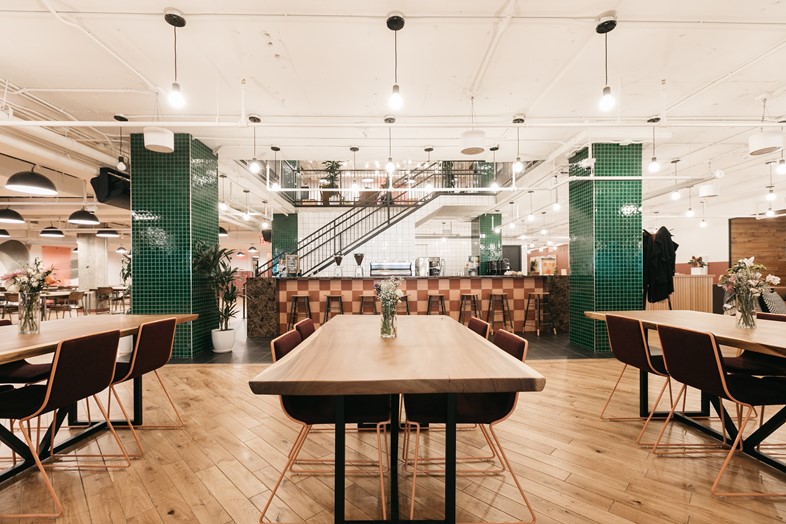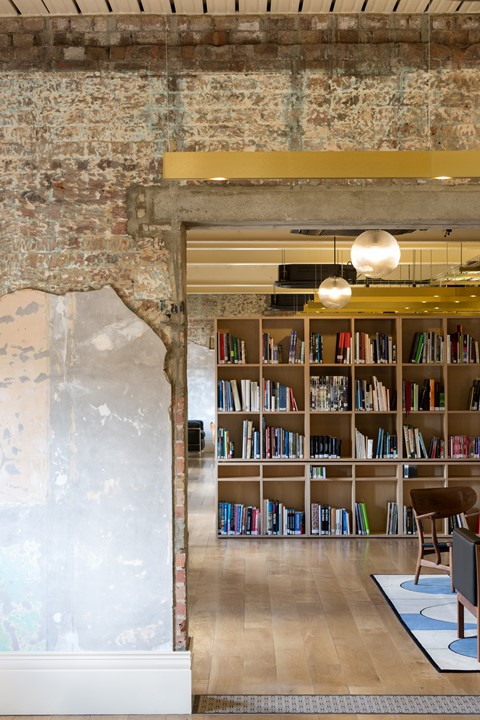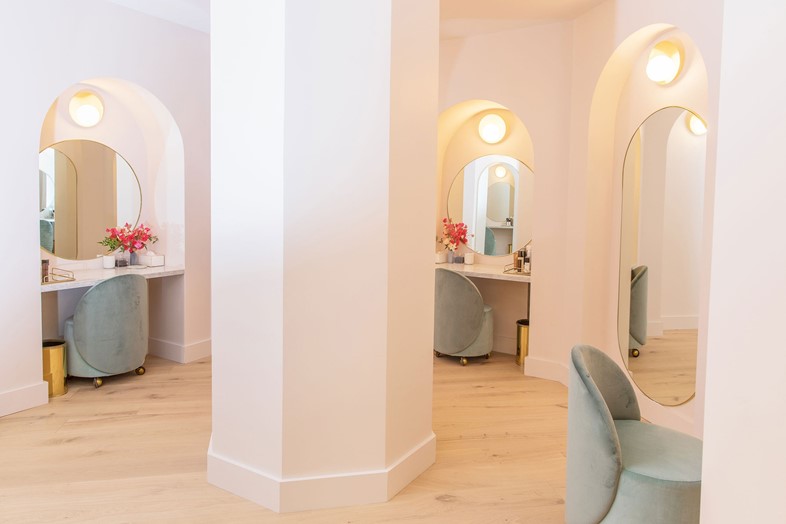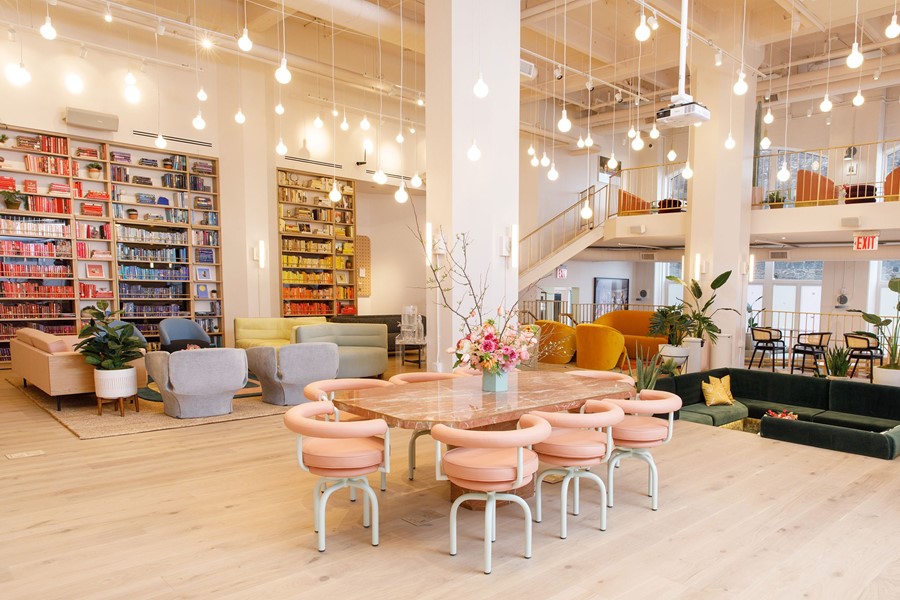Milly Burroughs looks at the psychology of why more and more people are choosing to work in shared spaces – and the role that design plays in the process
“Hell is other people!” according to oft-misinterpreted philosopher Jean-Paul Sartre, but it would seem the 1.7 million people predicted to be working in 19,000 co-working spaces worldwide by the end of 2018 aren’t big fans of his work. Sartre’s existential mantra has been interpreted as a resentment of the shame and objectification forced upon us by the presence of other people, so why is it that the number of people choosing to ‘hot desk’ or ‘co-work’ – a situation where you choose to spend eight hours a day working elbow-to-elbow with often complete strangers – is increasing at such a staggering rate?
In an era of digital distraction (and the bolshy commentary surrounding it), freelancers and the self-employed are left looking to their environment for mental sanctuary. Equally, more conventional employers are under mounting pressure to provide carefully choreographed workspaces that provide the stimulation staff require to conquer swelling expectations. As a result, focus on interior design has been repositioned as a priority and those with an acute comprehension of the value of elegant, intuitively defined spaces are finding themselves central to the evolution of co-working.

While industry leaders such as WeWork thrive on recreating the pack mentality-led campus experience of Silicon Valley’s signature tech giants, progressive hoteliers like Maslow’s Mortimer House founder Guy Ivesha see opportunity in catering to the desire for belonging we as humans are innately afflicted with, instead turning to hyper-personal psychological theory. Ivesha describes co-working at the newly-opened Fitzrovia hub as just one “piece of the puzzle” and explains that he didn’t envision Mortimer House as a co-working space per se, but as a place that is “extremely warm and satisfies many needs of an individual”. The basis of his fresh concept is rooted in Maslow’s hierarchy of needs – championed by Ivesha as one of the first studies focused on understanding positive outcomes of psychological phenomena, rather than grappling with the negative – which can be represented as a pyramid with physiological needs at the base, followed by safety, belonging, esteem and topped with self-actualisation. This structure acts as the wire-frame of Mortimer House’s charming architecture, which experience-sculpting design practice AvroKo was tasked with bringing to life. Ivesha described the process of vetting the team of designers as “dating”, having travelled to New York to spend time with them so as to gauge their creative compatibility. The intimacy of their relationship and the experiences both parties clearly value are reflected in the inviting textures and free-flowing spacial flow of the upper co-working levels, meanwhile the health-conscious ground floor restaurant and basement level gym cater to the physiological requirements of Maslow’s theory.

While some workspace groups target the masses, others, such as the new Chiara de Rege-designed outpost of The Wing in Brooklyn, focus on providing safe, welcoming spaces for professionals who may have been marginalised or excluded from traditional workspaces. The appetite for all-female co-working spaces has been fed across the US and can now be seen filtering into Europe with a wave of “female entrepreneur communities” such as London’s We Heart Mondays, located in Hackney.
The importance of having a welcoming, well-constructed work environment seems obvious, but how does our choice of space actually impact us psychologically? In a world where the boundaries of work and play are continually blurred, could it be that our ideal work environments are those that allow us to fuse professional and social life without compromising our painstakingly crafted personal identities? From the ongoing rejection of formal dress codes, to the cliché beanbags of new generation corporate headquarters, the professional world is riddled with design-led signifiers of a struggle for expressive liberation.

Last year, London-based interiors and architecture practice Squire & Partners relocated to Brixton, rehousing their growing team of creatives within what was the UK’s first purpose-built department store, Bon Marché. Architects retained the majority of the property’s original layout, proving that even those responsible for creating the world’s more engaging spaces are desperately seeking a break from tradition. According to director and head of interior design Maria Cheung, co-working is key to our increasingly multidisciplinary creative industries. “Opportunities to connect and pair-up with other like-minded people and businesses arise since the nature and design of these spaces foster an environment of cross-pollination of ideas and working relationships,” she argues.
Conceived at the the extremity of personal and professional fusion, iconic nightclub-turned-brand Ministry of Sound has enlisted the south London practice to open its own co-working space, The Ministry. “One of the driving factors behind doing this project was a weariness with the paucity of options for creative people to work in London. We decided from the start that we weren’t looking to create an office or cliché-filled co-work space, we wanted to make a members’ club where creative people produce great work.” says The Ministry creative director Simon Moore.

Regardless of their differences, the one theme consistently spotted at all examples of co-working space is the maintenance of personal identity, through behaviour and design. This means that when it comes to choosing one that will successfully elevate your psyche, the only blanket conclusion that can be realistically drawn is one epitomised by the increasing diversity of this developing market. Identify your specific needs, find a space that caters to those directly, and don’t be surprised when the natural evolution of your personal philosophies means it’s time to find somewhere new.
